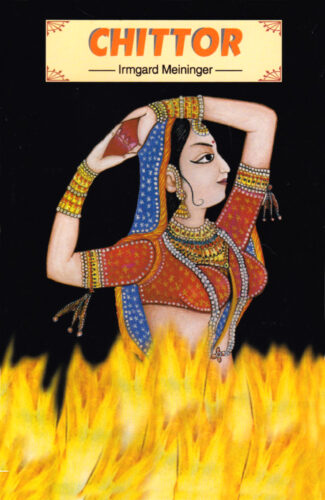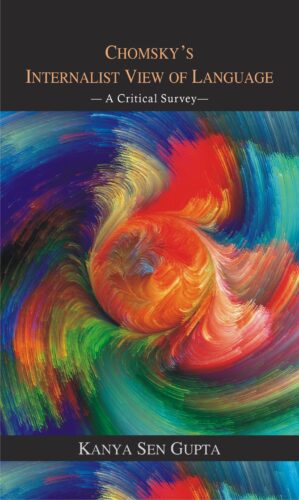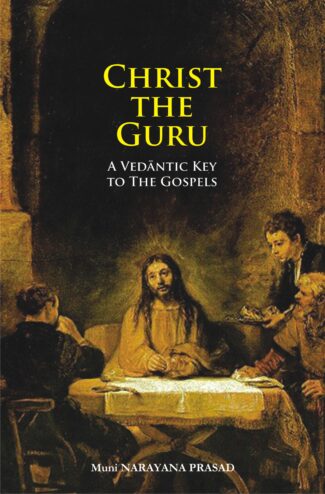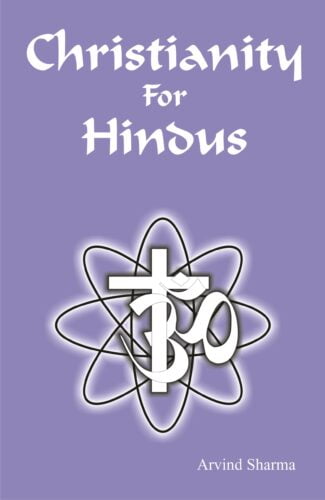Showing 141–150 of 1175 results

Based on diverse original sources, this is a well-knit narrative delineating Chandragupta Mauryas personality, his times, and his meteoric rise to political supremacy with contextual focus on polity, religion, society, economy, literature and arts.
A Ksatriya hero of little-known antecedents, Chandragupta Maurya was unmistakably a born leader of men, who within twentyfour years of his reign: 317 bc-293 bc, established a gigantic empire by not only unifying the countless fragments of a distracted India, but annexing some of the erstwhile Persian dominions as well. Professor Bhargava here profiles this first historical emperor of India, in all essential detail. Based on diverse original sources, notably, Brahmanical, Buddhist, Jaina, and Greek, the book sets out a fascinating, well-knit narrative delineating Chandragupta Maurya: the man, his times, and his meteoric rise to political supremacy with contextual focus on the state of polity, administrative mechanisms, religion, society, economy, literature and arts during his rule. The author also tries to apply correctives to the myths woven around Chandragupta in legend, literature, and chronicles. Acclaimed alike by historians and Indological journals of repute, Dr. Bhargavas book is now in its second edition: enlarged and thoroughly revised against the backdrop of the latest research findings.

Dr. Thomas Dahnhardt deals with the evolution of the Indian lineage of the Naqshbandiyya also called Mujaddidiyya to study the spiritual symbiosis between the Hindu and Muslim communities. He surveys various masters of the tradition, the establishment of a new khanaqah and the emergence and methodology of the Hindu offshoot of the Mujaddidiyya Mazhariyya.
The common heritage of India is an active concept expressing itself in the myriad forms of integration of diverse cultures and traditions. Change and Continuity in Indian Sufism explores this common heritage through a study of the esoteric relationship between Indias two major religious traditions, Hinduism and Islam as expressed in the sufi tradition. Dr. Thomas Dahnhardt focuses on the evolution of the Indian lineage of the Naqshbandiyya, generally known as the Mujaddidiyya, in Indian sufism as an example of the intense spiritual symbiosis between the Hindu and Muslim communities. Based on a field study among the Hindu and Muslim representatives of the Naqshbandiyya lineage, he presents a social and historical study of the Naqshbandiyya Mujaddidiyya, surveying the various masters of the tradition and taking up specifically the establishment of a new khanaqah of the Mazhariyya branch of the Mujaddidiyyal in Old Delhi, one of the most important Naqshbandi centres of the tradition in the Indian subcontinent. The work goes in detail into the emergence, doctrines and methodology of the Hindu offshoot of the Mujaddidiyya Mazhariyya along with creation of regional sub-Hindu branches. The book would be useful to scholars of inter-religious studies, Sufism and Indian religious traditions as well as general readers interested in the process of integration of traditions and communities.

Dr. Thomas Dahnhardt deals with the evolution of the Indian lineage of the Naqshbandiyya also called Mujaddidiyya to study the spiritual symbiosis between the Hindu and Muslim communities. He surveys various masters of the tradition, the establishment of a new khanaqah and the emergence and methodology of the Hindu offshoot of the Mujaddidiyya Mazhariyya.
The common heritage of India is an active concept expressing itself in the myriad forms of integration of diverse cultures and traditions. Change and Continuity in Indian Sufism explores this common heritage through a study of the esoteric relationship between Indias two major religious traditions, Hinduism and Islam as expressed in the sufi tradition. Dr. Thomas Dahnhardt focuses on the evolution of the Indian lineage of the Naqshbandiyya, generally known as the Mujaddidiyya, in Indian sufism as an example of the intense spiritual symbiosis between the Hindu and Muslim communities. Based on a field study among the Hindu and Muslim representatives of the Naqshbandiyya lineage, he presents a social and historical study of the Naqshbandiyya Mujaddidiyya, surveying the various masters of the tradition and taking up specifically the establishment of a new khanaqah of the Mazhariyya branch of the Mujaddidiyyal in Old Delhi, one of the most important Naqshbandi centres of the tradition in the Indian subcontinent. The work goes in detail into the emergence, doctrines and methodology of the Hindu offshoot of the Mujaddidiyya Mazhariyya along with creation of regional sub-Hindu branches. The book would be useful to scholars of inter-religious studies, Sufism and Indian religious traditions as well as general readers interested in the process of integration of traditions and communities.

The volume offers a fascinating study of chanted narratives from different regions of India and parts of Southeast Asia. It explores the nature of orality and its various attendant aspects, like composition, performance, transmission modes, socio-economic context, and the relationship that exists between its performer and the audience.
Every region/community of the world has its sahre of oral creativity, in varying measures though. And, accordingly, has its own legacy of chanted narratives: epical, hostorical, mythical, romantic, or even ritualistic. Which have long survived in the collective memory of its people, having been handed down from generation to generation. Confronted, however, by the cornucopian techno-centrism of todays life, these oral narratives are on their way out everywhere like many other vibrant cultural phenomena. Highlighting why we need to preserve this intangible heritage of mankind, the volume offers a fascinating study of chanted narratives from different regions of India and parts of Southeast Asia. Essentially a multi-author work, it explores the nature of orality and its various attendent aspects, like composition, performance, transmission modes, socio-economic context, and the relationship that exists between its performer and the audience. Also addressing methodological issues concerning the existing definitions and terminologies, the authors argue for a paradigm shift in the academic discourse on orality and oral cultures. Carrying twenty four contributors of leading scholars from France, Germany, India, Indonesia, Italy, Nepal, New Zealand, Sri Lanka and UK, the book not only provides theoretical insights into the complex nature of orality, but sets out a rich repertoire of chanted narratives as well. Folklorists, anthropologists, historians and scholars of Indian cultures will find it a useful acquisition.
Chinese philosophy is highly unique in its profound sense of moral thinking. The fundamental thesis of Chinese thinking is interdependence and mutual relationships between entities, human and natural. For great thinkers like Confucius and Lao zi a human being is a relatively constituted and situated self. What is important in social living is correlative thinking and resonance, complementary approach to differences, action guiding nature of judgment and the effective appropriation of naturalness and spontaneity in the interrelations between individuals, human beings and nature. The book is a prelude to study the significance of personal excellence and social harmony embedded in Chinese philosophical tradition.

It presents the history and culture of Rajasthans greatest fortified citadel and Mewars ancient capital, Chittorgarh. It narrates the heroic sagas of its warriors and describes its beautiful palaces, temples and lakes.
Every region/community of the world has its sahre of oral creativity, in varying measures though. And, accordingly, has its own legacy of chanted narratives: epical, hostorical, mythical, romantic, or even ritualistic. Which have long survived in the collective memory of its people, having been handed down from generation to generation. Confronted, however, by the cornucopian techno-centrism of todays life, these oral narratives are on their way out everywhere like many other vibrant cultural phenomena. Highlighting why we need to preserve this intangible heritage of mankind, the volume offers a fascinating study of chanted narratives from different regions of India and parts of Southeast Asia. Essentially a multi-author work, it explores the nature of orality and its various attendent aspects, like composition, performance, transmission modes, socio-economic context, and the relationship that exists between its performer and the audience. Also addressing methodological issues concerning the existing definitions and terminologies, the authors argue for a paradigm shift in the academic discourse on orality and oral cultures. Carrying twenty four contributors of leading scholars from France, Germany, India, Indonesia, Italy, Nepal, New Zealand, Sri Lanka and UK, the book not only provides theoretical insights into the complex nature of orality, but sets out a rich repertoire of chanted narratives as well. Folklorists, anthropologists, historians and scholars of Indian cultures will find it a useful acquisition.

This book analyses Chomsky’s philosophy of language in the context of its difference from Wittgenstein’s account of language, and also other views of language which are in line with Wittgenstein explanation. And it aligns with the philosophy of Wittgenstein and his colleagues.
This volume endeavours to get at Chomsky’s philosophy of language in the context of its difference from Wittgenstein’s account of language, and also other views of language which are in line with Wittgenstein explanation. Since Chomsky’s preference is grammatical or structural approach to language, which is innate, he interprets knowledge of language as knowledge of rule-governing sentence formation. Obviously, Chomsky approves of Private Language with no concern for the theory of communication which is rooted in the use of language. In other words, Chomsky is not interested in successful communication which takes place only in social practices. But, according to what we have discussed in this book, successful communication or speech act is possible by what people normally do according to social convention.
In short, since Chomsky depends upon the structure or innateness of internalist approach to language, he cannot be accounted for social interpretation of language, which is needed for successful communication. As in this book, we are committed to public or socially approved language of Wittgenstein and his colleagues which is essential for communication, we walk away from Chomsky’s structural or mentalistic or innatist interpretation of language.

This commentary volume contends that, from the Gospel accounts of Bible, one may perceive, in Jesus’s life and words, the same absolutist vision that underlies the teachings of Advaita Vedanta. Echoeing interreligious harmony, it invites non-Christians to visit the great enlightened guru in Jesus, and the Christians to imbibe the spirit of Advaita Vedanta in Jesus’s teachings.
The ocean of philosophical insight hiding in the words and story of Jesus Christ has influenced and charged millions of people and are still inspiring. The teaching and philosophy discerned across the four Gospels According to Matthew, Mark, Luke and John have stirred the philosophical perspective of Muni Narayana Prasad and it paved the way for him making a Gospel commentary in the light of Indian philosophy, Advaita Vedanta. In his scholarly attempt, the author has brought an apocryphal Gospel of Thomas too into its ambit.
Though the words of wisdom revealed by Jesus across these Gospels differ in language and style from Indian Vedanta, they reveal the same wisdom or supreme happiness that the Vedanta philosophy talks about. In this book, the author has attempted to explain the wisdom found in one cultural frame of reference as found in the other. That is, the teachings of Jesus Christ are elucidated in terms of the characteristics of Advaita Vedanta. Jesus, seen across these Gospels, always maintains his position of an enlightened seer (rishi). Thus the author calls him a sad-guru.
The author contends that from the Gospel accounts one may perceive, in Jesus’s life and words, the same absolutist vision that underlies the teachings of Advaita Vedanta. Echoing interreligious harmony, the author invites the non-Christians to visit the great enlightened guru in Jesus and the Christians to imbibe the spirit of Advaita Vedanta in Jesus’s teachings.
A must-collect, the book should find favour with the spiritual gurus, philosophers, and all progressive-thinking persons across religions.

This work, in simple language, is meant for non-Christians, particularly Hindus, who may be interested in knowing about Christianity, professed by about a third of the world’s population what it teaches, how do Christian doctrines compare with Hindu dictums, what are the various denominations, etc.
Christianity is the worlds largest religion today: about 33.6 per cent of the worlds population has Christianity as their religion. It is also a religion that struck roots early in India as early as middle of the first century ce. The book is an account on Christianity that blends aspects of Christian belief and worship with matters like its significance and the urgent need for interfaith understanding in the globalised and pluralistic societies of today. It is meant for non-Christians, particularly Hindus, who are keen to understand the essential aspects of the religion.
In simple language, the work reveals the essence of the Christian beliefs, its spread over history and its prevalence now, and its importance as a world religion. It examines doctrines of the Church, significance of Jesus Christ, and historical forms of Christianity like Roman Catholicism, Eastern Orthodoxy and Protestantism. It examines the history of Christianity in India. The interesting work refers to a number of religious works on Christianity and writings of men who commented on Christianity and personified its values like love, compassion and sacrifice. It also deals with some controversial features of the religion like its need to proselytise.
| There are no products |